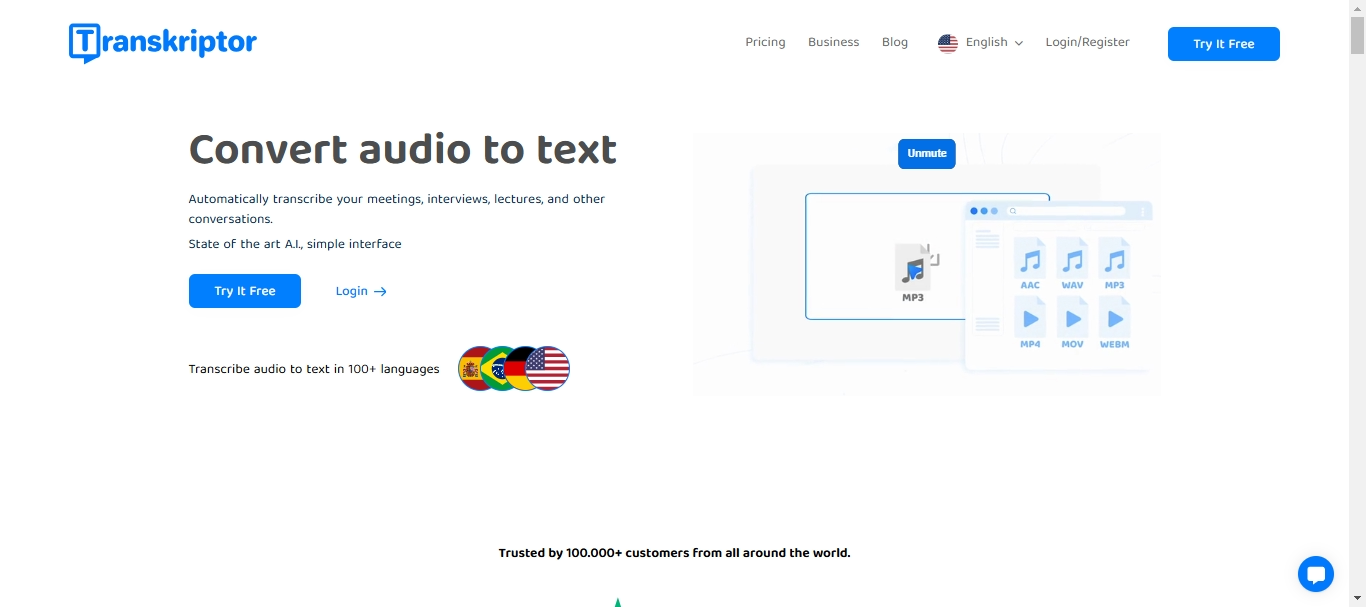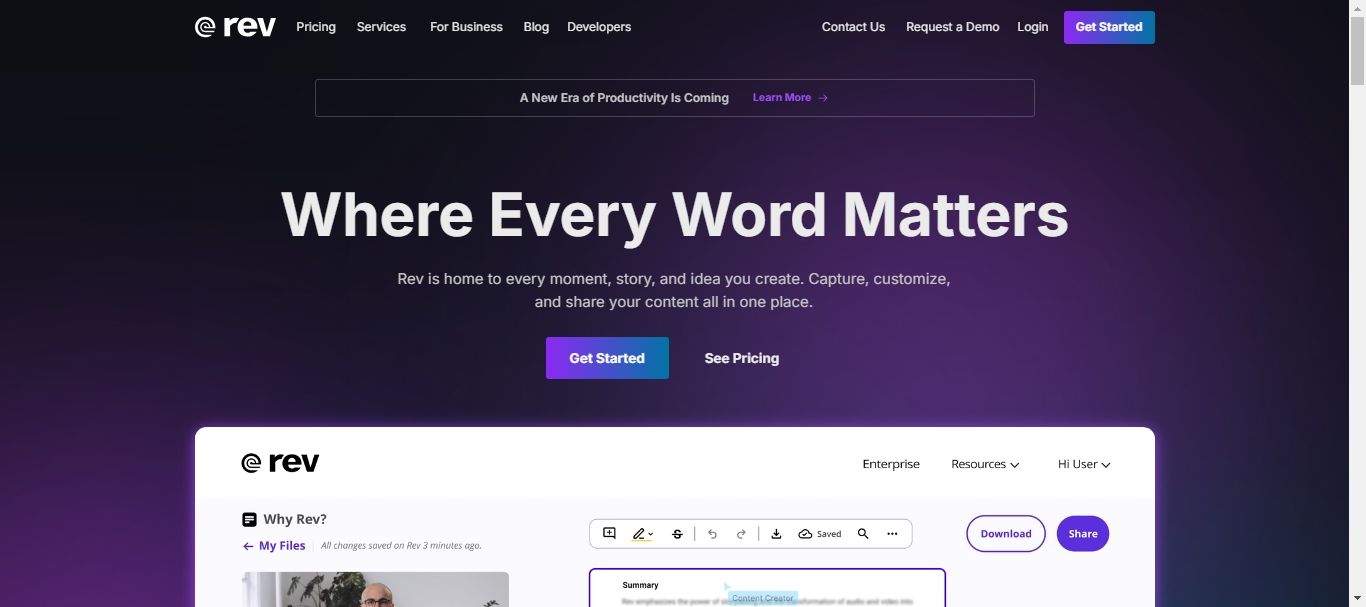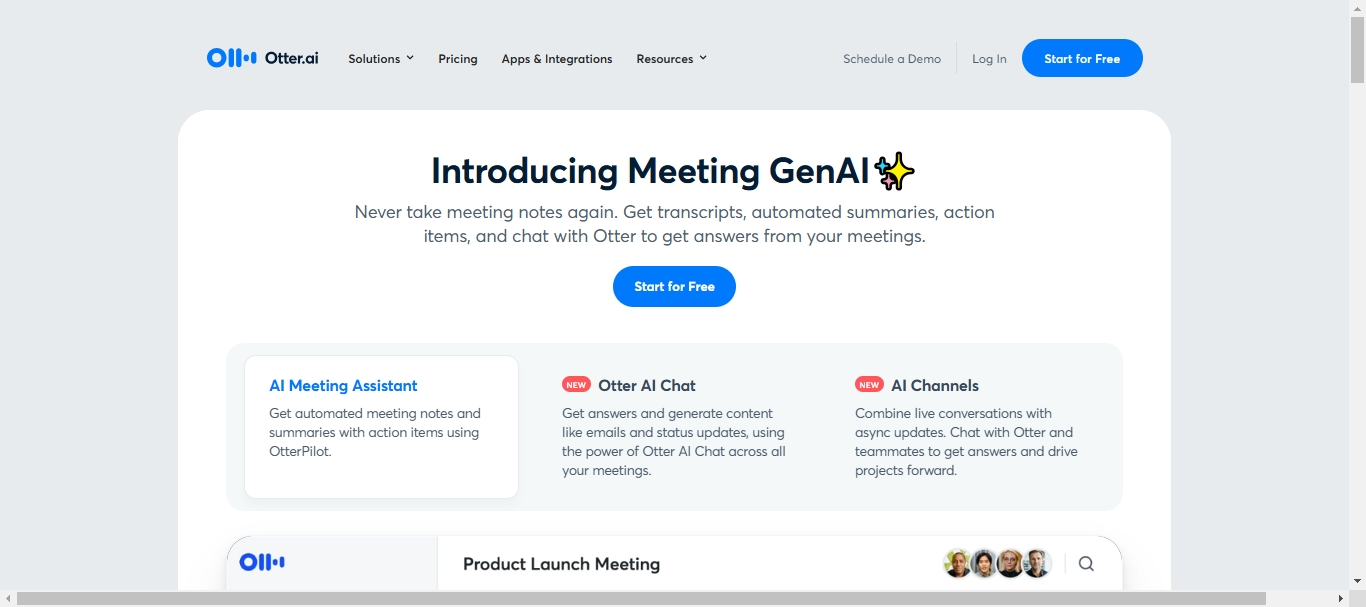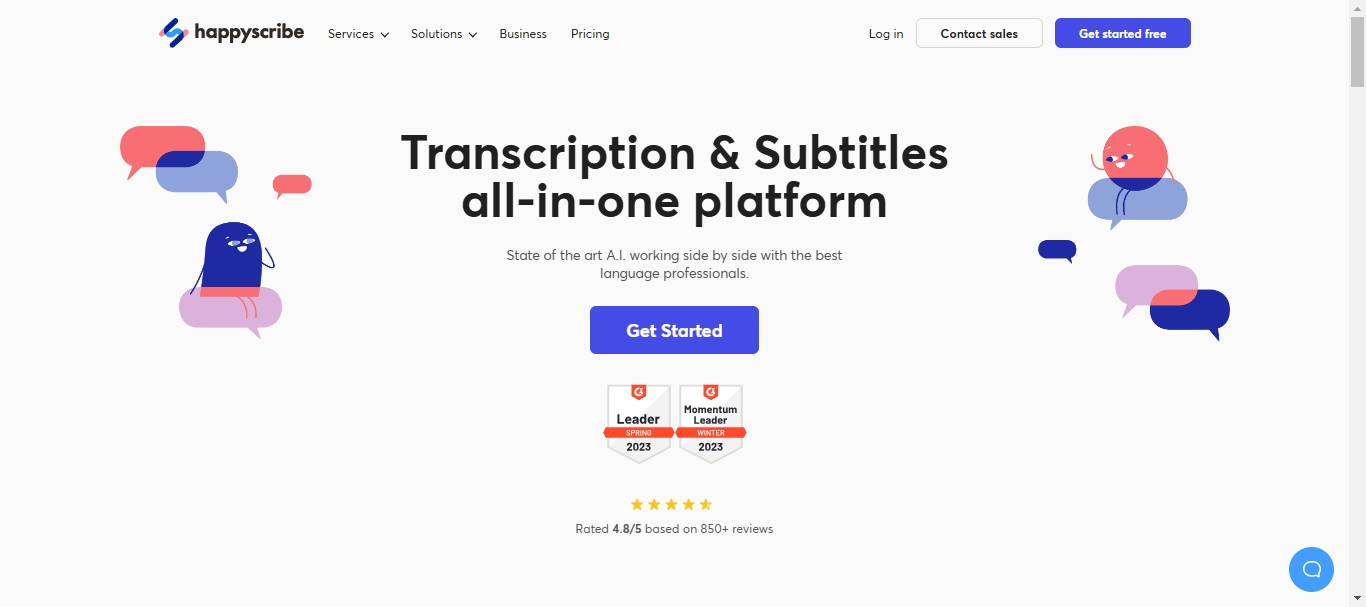This guide will walk you through the simple steps to add captions to X (Twitter) videos using a variety of tools, including Transkriptor . You'll be able to easily enhance your videos, making them more impactful and accessible to a broader audience after reading this post.
Why Captions Are Essential for Twitter Videos
Captions play a vital role in making X (Twitter) videos more accessible and engaging for all users.
Captions ensure that your message is communicated effectively, even when viewers have the audio turned off. This feature is significant for X (Twitter) video accessibility, as it allows people with hearing impairments to fully engage with your content.
You make your videos more inclusive and also cater to a broader audience who will be scrolling through X (Twitter) in sound-sensitive environments like public transport or quiet offices. Captions allow these viewers to follow along without turning on the sound, keeping them engaged with your content.
One of the key goals is also to enhance X (Twitter) engagement with captions. People are more likely to stay engaged and absorb the content when they can read along with the video.
Captions also help reinforce your key points, making your content more memorable and shareable. This can lead to increased interaction and higher chances of your videos being shared, liked, and commented on.
Incorporating captions into your Twitter videos is a simple yet powerful way to improve accessibility and boost engagement. You can reach a wider audience and ensure that your message resonates with everyone, regardless of how they choose to view your video, by making your content more user-friendly and inclusive.
Top Tools for Transcription and Speech-to-Text Conversion
Using the right tools for transcription and speech-to-text conversion is essential when adding captions to X (Twitter) videos.
Several top tools that convert speech to text in video content make it easy to create accurate transcription for X (Twitter) videos. These tools are perfect for anyone looking to convert audio to text for social media, ensuring your audience can engage with your content, even without sound.
The transcription tools at your disposal make it easier to deliver clear, captioned videos that resonate with your audience.
Transkriptor: Easy and Accurate Captioning

Transkriptor is a leading tool for adding video captions, offering a seamless and efficient way to enhance your content. It simplifies converting speech to text, making it an essential tool for anyone looking to add captions to their videos.
One of the standout features of Transkriptor is its automatic transcription capability.
The tool quickly and accurately converts spoken words into text, saving your time and effort. Transkriptor handles the transcription process with precision, allowing you to focus on refining your message rather than manually typing out captions whether you’re working on a short video clip or a longer piece of content.
Editing captions with Transkriptor is straightforward. The tool provides an intuitive interface where you can easily adjust the text, ensuring your captions are perfect before they go live. This ease of editing means you can correct errors or customize captions to match your video's tone and style.
Transkriptor offers quick export options once your captions are ready, making adding the final captions to your video simple. It ensures that your captions are ready to go in just a few clicks, whether you’re uploading directly to X or another platform.
Transkriptor makes captioning videos easy and accurate, providing all the tools you need to create professional-quality captions with minimal effort.
Try Transkriptor today for easy and accurate captioning that saves time and enhances your content.
Rev.com: Professional Transcription Services

Rev.com is a well-known service specializing in high-quality transcription, offering a reliable solution for those needing professional captions. The tool ensures that your audio is converted to text with meticulous attention to detail with a team of human transcribers, making it a go-to choice for projects where precision is paramount.
Rev.com’s strength lies in its ability to deliver highly accurate transcriptions, particularly for complex or technical content. Its professional service can be a valuable resource if your video requires extra accuracy, such as when dealing with industry-specific jargon or multiple speakers.
Rev.com excels in accuracy, but it’s worth noting that this level of precision often comes at a higher cost and longer turnaround time.
Transkriptor offers a more user-friendly interface that lets you quickly and easily generate captions with automatic transcription. It provides an efficient solution without compromising quality for those who need to balance speed and ease of use with accuracy.
Otter.ai: Automated Speech-to-Text Solution

Otter.ai is a well-regarded automated speech-to-text tool offering features that make transcription quick and efficient.
Its ability to transcribe spoken words in real time is a significant advantage, especially for capturing content during meetings, lectures, or interviews. Otter.ai also includes useful features like speaker identification and searchable transcripts, which help users easily navigate their content and find specific information.
The strength of Otter.ai lies in its versatility and detailed transcription capabilities, making it a great choice for users who need comprehensive and organized transcripts. The process with Otter.ai can be a bit more complex, especially if you’re looking for a quick and straightforward solution to adding captions to X videos.
Otter.ai offers a range of powerful features, and Transkriptor focuses on providing a streamlined and user-friendly experience.
Transkriptor makes generating accurate captions easy and quickly adds them to your X videos with automatic transcription and simple editing tools. It offers a more direct and efficient solution for those looking to enhance X engagement with minimal effort.
Happy Scribe: Versatile Captioning Tool

Happy Scribe is a versatile tool that excels in both transcription and captioning, making it a popular choice for content creators who need flexibility in managing their audio and video files.
The tool allows users to convert speech into text with high accuracy and then easily generate captions for various types of content. It supports multiple languages and offers advanced editing options, which makes it suitable for more complex projects.
Happy Scribe’s strength lies in its adaptability, catering to users who need a comprehensive solution for both transcription and captioning across different platforms. Happy Scribe provides the tools to do it all, whether you’re working on a detailed transcript for a podcast or adding captions to a YouTube video.
Transkriptor offers a simpler and more streamlined alternative if your primary focus is adding captions to X videos. Happy Scribe is feature-rich, but Transkriptor specializes in making the process of captioning quick and easy, specifically tailored for social media content.
Transkriptor allows you to create captions efficiently and enhance your X engagement with minimal effort with its automatic transcription and straightforward editing tools. It is a practical and efficient choice for users who want a no-fuss solution for adding captions to X videos.
Step-by-Step Guide: Adding Captions to Twitter Videos
Adding captions to X videos can greatly improve accessibility and engagement, and using the right tools makes this process easy. With Transkriptor, you can quickly add captions to your videos and ensure they are clear and accurate.
Other tools follow a similar process for adding captions to X videos, but Transkriptor offers a streamlined, user-friendly experience that makes captioning quicker and more efficient. This ensures your videos are more inclusive and engaging for all viewers.
Step 1: Upload Your Video
The first step in adding captions to your X video is to upload your video to a transcription tool. This is quick and easy with Transkriptor.
Start by logging into your Transkriptor account, then click on the upload button. Select your video file from your device, and Transkriptor will automatically begin processing it. This step is simple and fast, allowing you to get started on captioning without any hassle.
Transkriptor will analyze the audio and begin converting it to text, setting the foundation for creating accurate captions.
The upload process is similar if you use other tools like Happy Scribe or Otter.ai. Log in to your account and navigate to the upload section. Select the video file from your device, and the tool will start processing it immediately.
Each of these tools is designed to handle various file formats, making it convenient to upload and prepare your video for transcription.
Step 2: Generate and Edit Captions
Once your video is uploaded, the next step is to generate and edit captions. This process is straightforward and user-friendly with Transkriptor.
Transkriptor automatically starts transcribing the audio into text after uploading your video. The transcription is typically ready within minutes, depending on the length of your video. This quick turnaround allows you to move directly to the editing phase without delays.
Transkriptor’s editing interface is designed for ease of use. You can play back your video alongside the generated text, making it easy to spot and correct any errors in the transcription.
The interface allows you to make adjustments quickly, ensuring that your captions are accurate and align perfectly with the audio. This feature helps catch nuances and provide the text that matches the video's tone and context.
The process is similar to other tools. They automatically generate captions once the video is uploaded, but these tools' editing interfaces can be more complex. They will not be as intuitive as Transkriptor, which focuses on simplicity and efficiency.
Step 3: Export and Add Captions to Twitter
After generating and editing your captions, the final step is to export and upload them to X.
Start by downloading the captions from Transkriptor as an SRT file, a widely accepted format for subtitles and captions. Transkriptor makes this process simple and fast, ensuring your captions are ready to use with just a few clicks.
Next, log in to your X account and navigate to the media studio. Here, you can upload your video by selecting it from your device.
Click the option to add captions or subtitles once the video is uploaded, and upload the SRT file you exported from Transkriptor. Ensure the captions are correctly synced with the audio by previewing your video. X's media studio provides an easy way to check this, allowing you to make any necessary adjustments.
You can quickly add captions to your X videos, making them more accessible and engaging for all viewers by following these steps. This not only enhances user experience but also increases the reach and impact of your content.
Best Practices for Captioning Twitter Videos
Learn best practices to understand how to add subtitles to X videos so your content will be accessible, engaging, and professional. Accurate, readable, and well-synchronized captions can significantly enhance viewer experience and broaden your audience's reach on social media.
To start, always ensure that your captions are accurate. This means reviewing the automatically generated text for any errors or misinterpretations.
You can easily edit the text directly in the Transkriptor, allowing you to make quick adjustments to match the audio perfectly. Accurate captions make your content more understandable and maintain the integrity of your message.
Readability is another key factor when adding subtitles to X videos. Keep your captions concise and use simple language that viewers can easily follow. Avoid long sentences and overly complex words, as they can be difficult to read quickly.
Ensure the text size is large enough to be seen clearly on desktop and mobile devices. Transkriptor's editing interface allows you to adjust your captions to ensure they are easy to read and do not clutter the screen.
Finally, synchronization is crucial for effective video captions for social media. Captions should appear at the right moment in the video to match the spoken words accurately.
You can fine-tune the timing of your captions, ensuring they are perfectly aligned with the audio with Transkriptor. Well-synchronized captions keep viewers engaged, as they provide a seamless viewing experience.
You can create high-quality captions that enhance your Twitter videos and make them more accessible to a wider audience by following these best practices and using Transkriptor.
Using Tools for Creating Meeting Notes from Video Tweets
Using tools like Transkriptor to create meeting notes from video tweets effectively captures and summarizes key information shared in social media videos.
Video tweets often contain valuable insights, discussions, or presentations you want to refer back to later. You can easily generate comprehensive, searchable, and shareable meeting notes by converting these videos into text.
Transkriptor makes this process simple and efficient. Start by uploading the video tweet to Transkriptor. The tool will automatically transcribe the voice to text, providing a written version of everything discussed in the video.
This is particularly useful for creating meeting notes from video tweets, as it allows you to focus on the main points and key takeaways without missing any details.
You can easily edit and format the text once the transcription is complete to highlight important information or organize it into sections for clarity. Transkriptor’s user-friendly interface makes adjusting the transcription to suit your needs easy, ensuring that your meeting notes are accurate and well-structured.
These transcriptions can also be repurposed as X captions. The voice-to-text feature in Transkriptor ensures that your captions are precise and synchronized with the video content, enhancing the accessibility and engagement of your tweets.
Using tools like Transkriptor to convert voice to text for X captions and meeting notes helps you make the most of the content shared in video tweets, providing a valuable resource for personal use and wider distribution.
Conclusion
Adding captions to Twitter videos is a powerful way to make your content more accessible and engaging.
Tools like Transkriptor make it easy to create accurate captions and help you generate detailed meeting notes from video tweets. Transkriptor ensures that important information is captured and easily shareable by converting voice to text quickly and efficiently.
Using these tools enhances the value of your social media videos and helps you reach a wider audience. Explore Transkriptor today to improve your video content and maximize its impact on X.

